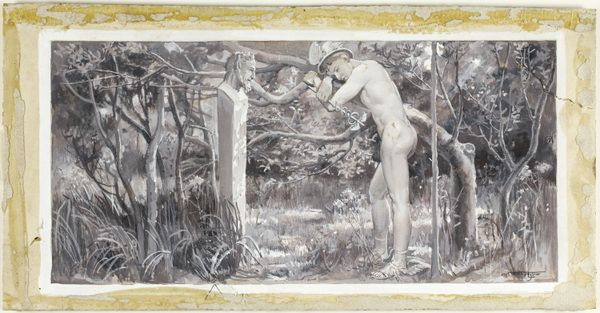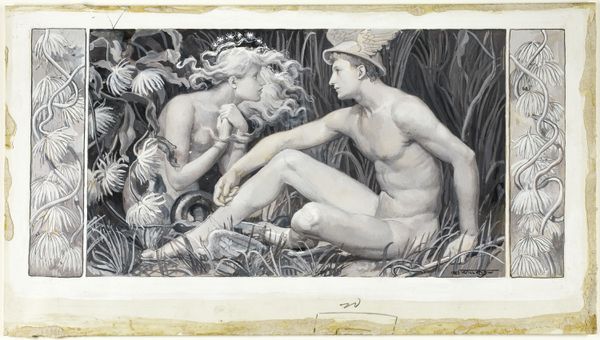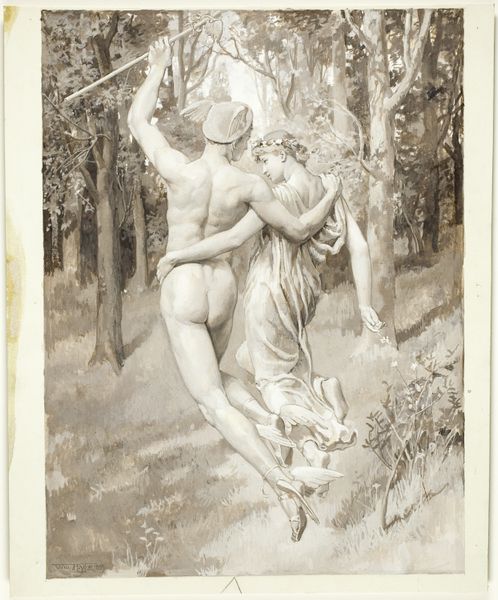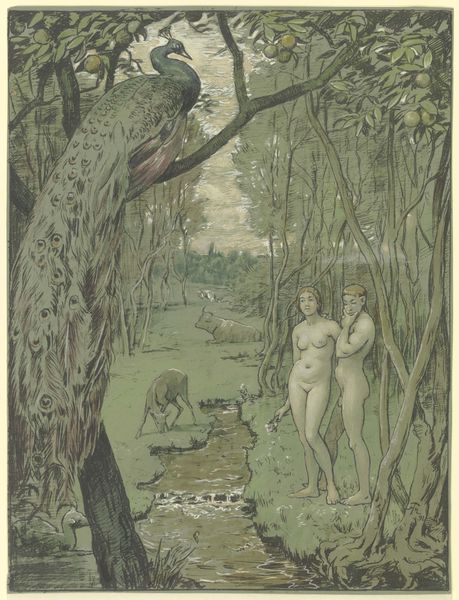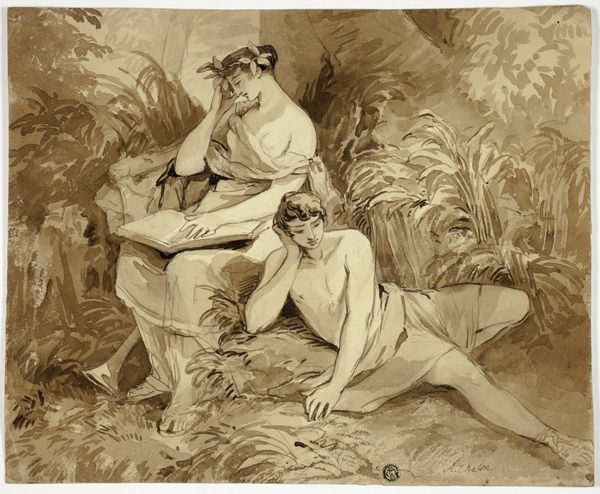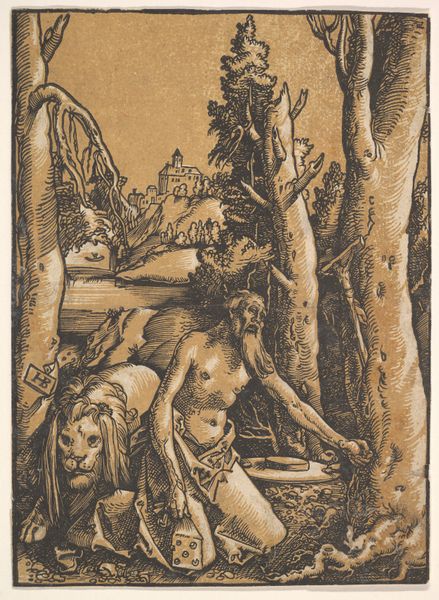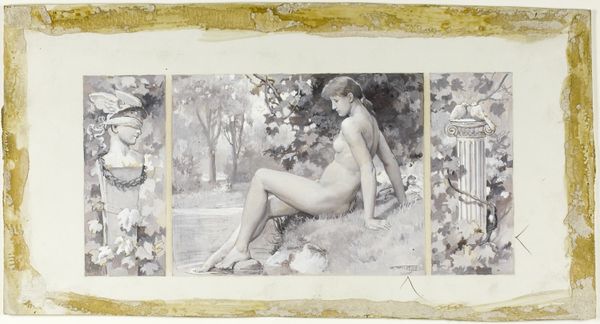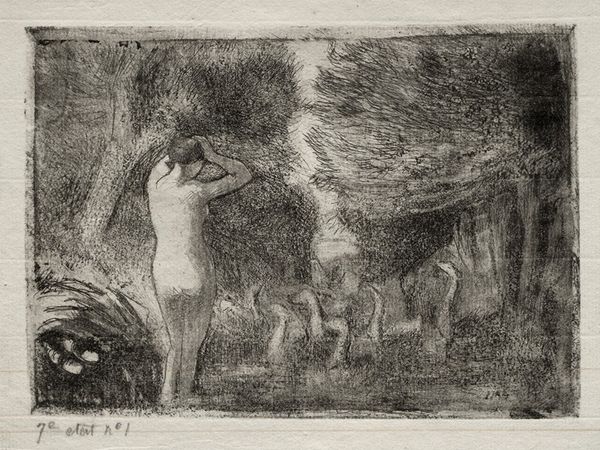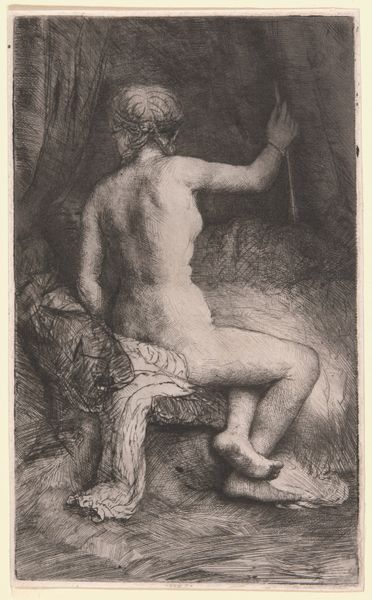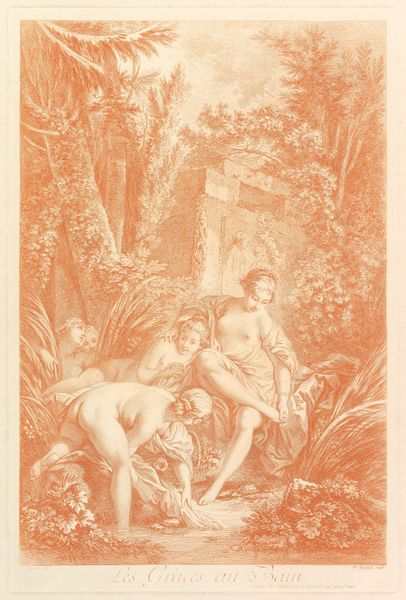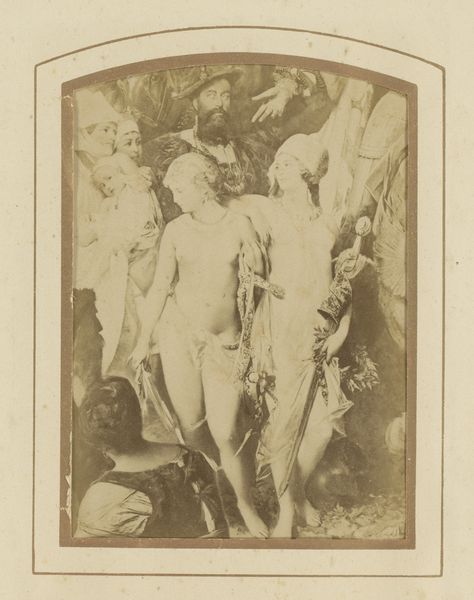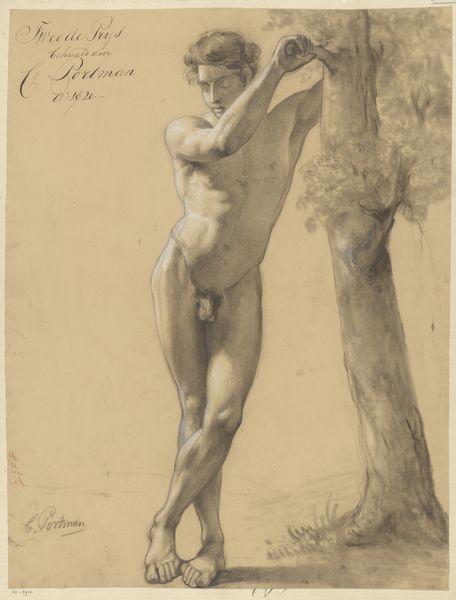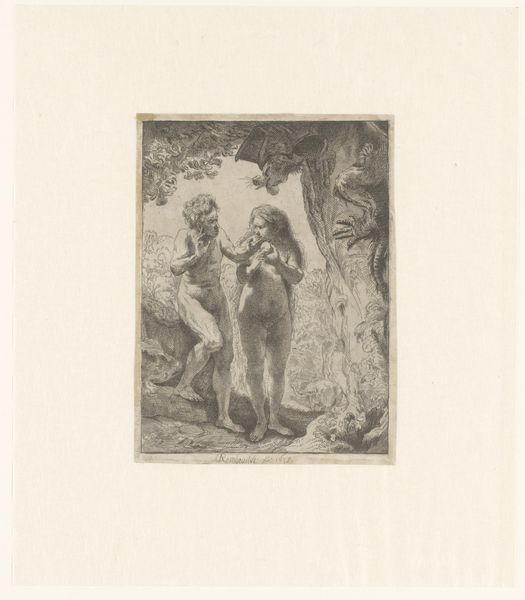
drawing, print, charcoal
#
drawing
# print
#
sculpture
#
landscape
#
charcoal drawing
#
figuration
#
underpainting
#
united-states
#
charcoal
#
history-painting
#
academic-art
#
charcoal
#
nude
Dimensions: 606 × 455 mm
Copyright: Public Domain
Curator: Let's discuss Will Hicock Low's "Ode: 'Bards of passion and of mirth'," created in 1887. The artwork resides here at The Art Institute of Chicago and is made with charcoal. Editor: My first thought is about its quiet solemnity. The monochrome palette amplifies this. Curator: The title, taken from Keats, is particularly relevant. Low captures an idealized scene of figures within a landscape, evoking both the romanticism of Keats' poetry and academic artistic traditions. Notice the positioning of the female figure; there is a dynamic of watching and being watched here. Editor: The charcoal execution is so interesting. I see it not merely as a preliminary sketch, but as a thoughtful composition that leverages the materials to establish hierarchies. The human figure is finely rendered with precise, visible labor, while the surrounding vegetation fades away. I find that so significant because it draws out what Low sees as most crucial. Curator: Right. And the nude figure coupled with classical allusions presents various gendered interpretations of art and poetry. Her pose almost mirrors a pensive muse or perhaps even Diana. The setting, too, lends itself to classical interpretations, blurring the line between fantasy and historical idealization. Editor: It feels like a constructed Arcadia more than an observed reality. How fascinating it is that we find idealized spaces like these crafted with such meticulous labor using charcoal on paper. Curator: In the context of the late 19th century, Low engages in conversations around artistic and cultural nationalism, crafting visual allegories tied to American artistic identity and historical European standards. Editor: Indeed. It reveals a conscious act of building something, connecting technique and visual narratives to their material realities. It allows us to perceive how meaning itself becomes a manufactured thing. Curator: It leaves us contemplating the constructedness of not just the art, but the ideas they embody. Editor: Exactly! A really fantastic look at the artist's work and labor, even in its 'unfinished' charcoal state.
Comments
No comments
Be the first to comment and join the conversation on the ultimate creative platform.
